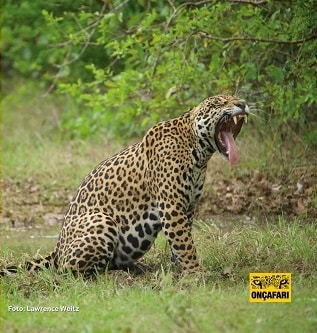In our role as PR counselors, we’re often asked how to make things newsworthy, and tourism animal experiences are no exception. It’s a valid question because the answer requires more than just adding discounted zoo tickets to a hotel stay to create a package. To be newsworthy, there must be something extraordinary, unique, unexpected, or timely about it.
Before I review some examples to illustrate the point, let’s just be clear on this: being “newsworthy” in ANY subject is not easy, nor is it often achieved passively. You have to pursue it deliberately, and in most cases jump through some hoops to make it happen. Proactive investments are usually required, whether financial, creative, or both. Risk – often high risk – is usually involved. And a thoughtful runway of time and planning is key.
This means that, as a tourism marketer or owner/operator, you must have both vision and patience if you want to create concepts that are newsworthy.
And these folks did.
Here are four illustrative examples from around the world of newsworthy animal experiences in tourism:
This hotel is set within the National Zoo & Aquarium in Canberra, Australia. And by “set within,” I mean the accommodations are organically nestled into the entire experience, not a stand-alone hotel that happens to be located on the grounds. Rooms and suites offer exclusive viewing perches, or share glass walls with animal habitats, allowing guests unrestricted viewing from the privacy of their own space, like so:

From jungle bungalows to giraffe treehouses and rooms that put guests up close and personal with sharks, meerkats, capuchin monkeys and more… it’s no wonder the website prominently features a “join the waitlist” option.
What elements make this a newsworthy tourism animal experience?
- The financial and architectural investment to create unique accommodations that offer rare 24/7 access to animals.
- Only a small handful of hotels like this in the world provide such an atypical experience.
- Dramatic, unexpected photos/video to promote the experience.
The Biosphere at Treehotel, Sweden
The entire concept at Treehotel is extraordinary and newsworthy… a collection of dramatic, high-design treehouses distinctively different from each other. But one – The Biosphere – takes your breath away both visually and experientially:

Adorned with 340 birdhouses attached to its exterior, guests enjoy a front row seat to some of the most spectacular birdwatching possible. The Biosphere’s design is meant to protect and foster the local bird population. But lordy, it manages to be a showstopper in the process.
What elements make this a newsworthy tourism animal experience?
- Well, 340 birdhouses to start (duh). Pretty sure it’s the only accommodation in the world with THAT distinction.
- It’s visually arresting, and photos of it stop people in their tracks, even when mindlessly scrolling on social media.
- The bold, complex design earns news attention for both its financial and creative investments.
Caiman, A Brazilian Ecotourism Retreat in the Pantanal
The Pantanal is the world’s largest tropical wetland, and its 42 million acres spans across Brazil, Bolivia, and Paraguay. Caiman Ecological Refuge, with 18 lodge rooms and two private villas, is within the Pantanal in the Brazilian state of Mato Grosso do Sul. The 150 miles to get there from the airport are fraught with dirt roads that have no internet or GPS access, but it’s worth the drive because this:

One of Caiman’s conservation partners, Onçafari, is dedicated to the conservation of once-endangered and now near-threatened jaguars with research, protection, education, and repopulation. Guests can go out with guides to learn more about these elusive animals through up-close interaction. Nocturnal guided exploration is also an option for those feeling brave.
What elements make this a newsworthy tourism animal experience?
- The confluence of the Pantanal, jaguars, and deeply meaningful conservation efforts.
- The Caiman Ecological Refuge itself, which offers guests education and interaction with many other options for sustainability education…from livestock ranching to conservation projects for endangered and illegally trafficked birds.
- The remote location. There’s no convenient airport shuttle and no public transportation. You need a special kind of car that can take the dirt roads or a turbo-prop aircraft to get there. Basically… you have to really WANT to get there.
Natural Habitat Alaska Bear Camp
It’s true there’s no shortage of “bear viewing” experiences in the tourism industry, especially in British Columbia and Alaska. So it takes an unusual one to stand out. Once again, we lean into the “hard to get to” element here. With Natural Habitat, you fly in a private bush plan over volcanoes, glaciers, and icefields to get to this remote Bear Camp:

The weatherproof tent cabins are surprisingly designed for comfort, with climate control, lighting, hard floors and a solid door. It’s not glamping…but it certainly ain’t “roughing it.” The three days you spend at the camp gives you extraordinary up-close access to Alaskan brown bears with experienced Expedition Leaders who both educate and safeguard you. This is no “quick tour to a viewing platform” so you can take a selfie and prove you were there. This is a full-on bear immersion.
What elements make this a newsworthy tourism animal experience?
- The remote location. Any place “only accessible by plane or boat” already piques media interest. The harder one must work to get there, the more interesting it becomes.
- The layout and design of the Bear Camp. Just one spectacular aerial photo (as shown above) is enough to capture a traveler’s imagination and interest.
- The collaboration with World Wildlife Fund (WWF). There’s no denying that such respected brand recognition adds credibility to the experience.
These four experiences aren’t all newsworthy for exactly the same reasons, but two things are certain with all of them:
- They’re not “news-washing,” which is when a business tries to put a slick bow on something to make it seem newsworthy, without making the under-the-hood investment needed to give the angle true, credible substance. When a program, package, or experience focuses more on “looking good” than “being good”… a credible journalist can sniff that out in a heartbeat, and it’s a turnoff.
- They all have extraordinary photo/video opportunities to help tell their story…and the business has invested in capturing the BEST photography/footage at likely a hefty cost to them.
Investing in “hero shot” photography is essential to developing a newsworthy story, as you can see with these tourism animal experiences shared here. Journalists NEED photography, and it’s only natural that they’d want to use ones that tell the story visually, in just one glance…and that cut through the clutter to get people’s attention.
For more tips on this crucial news element, see these tips on the secret to a great tourism photo.
 get travel marketing tips
get travel marketing tips 




